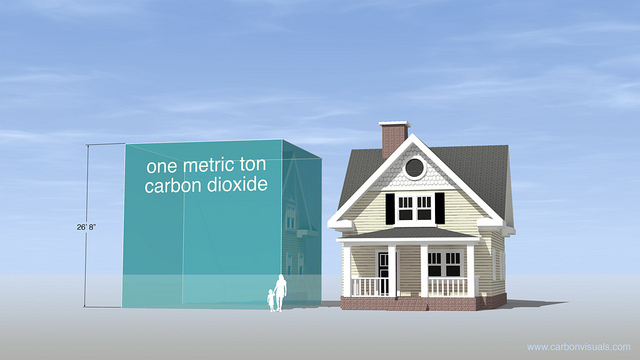After an eight-year streak of declining greenhouse gas pollution, the most recent data from the Environmental Protection Agency indicates that Maine’s climate-heating emissions rose slightly between 2012 and 2013, thanks to a large uptick in fossil fuel use for motor vehicles.
Maine’s economy-wide greenhouse gas emissions peaked in 2004, when cars, trucks, power plants and other sources produced roughly 27 million metric tons of climate-heating gases.
Since then, the state’s total greenhouse gas emissions have followed a downward trajectory, thanks in large part to substantial improvements in the electric power sector and improved energy efficiency in homes.
But there’s no downward trend evident in Maine’s transportation-related emissions, the biggest source of greenhouse gas pollution in New England.
Maine’s emissions from cars and trucks dipped between 2006 and 2013, when high gas prices and a subsequent recession restrained the amount of gasoline that Mainers burned. But with the return of cheaper gas, Mainers are driving more again, and may be losing interest in more efficient vehicles.
The EPA hasn’t released updated pollution estimates for the years since 2013, but fuel tax data from the Maine Revenue Services indicate that Mainers’ gasoline consumption – the primary factor behind transportation-related emissions – increased by another 2 percent between 2013 and 2015.
Dylan Voorhees, the clean energy director for the Natural Resources Council of Maine, says that “transportation emissions have been the largest source for quite a while, and as a state, we’ve generally failed to start tackling that in a sufficient way.”
Thus far, though, most policies to rein in greenhouse gas pollution have primarily focused on power plants and home heating efficiency programs, and not on the transportation sector.
“All the cars and trucks together put out more carbon dioxide, but there’s a limited number of fossil-fueled power plants, and each power plant is a big, big emitter. So it’s been more feasible” for environmental groups to focus there, says Voorhees.
Maine’s short-term climate goal is to reduce emissions 10 percent below 1990 levels by 2020. The state is close to meeting that goal now, even in spite of the recent increases in gasoline consumption.
But the state’s longer-range goals will be harder to meet without bigger changes in the transportation sector. NRCM has focused on promoting electric vehicles and expanding the state’s network of charging stations to support them.
Meanwhile, more stringent fuel-economy standards that took effect for model year 2012 motor vehicles could also start bringing transportation-related emissions downward. A recent report from the Georgetown Climate Center estimates that increasingly strong fuel economy requirements for new cars could reduce transportation-related emissions another 29 percent by 2030.
Copy the Story LinkComments are not available on this story.
Send questions/comments to the editors.



